The Structural Innovation Behind Hyper-Building B
As cities continue to grow vertically, the need for adaptive, resilient, and expressive structural systems becomes increasingly vital. The Hyper-Building B project, developed as part of the Integrative Modeling Seminar at MaCAD, embraces a forward-thinking approach that integrates Japanese aesthetics, parametric design, and high-performance structural engineering. The structural team aimed to balance efficiency, stability, and aesthetic expression, ensuring seamless integration with architectural and environmental factors.
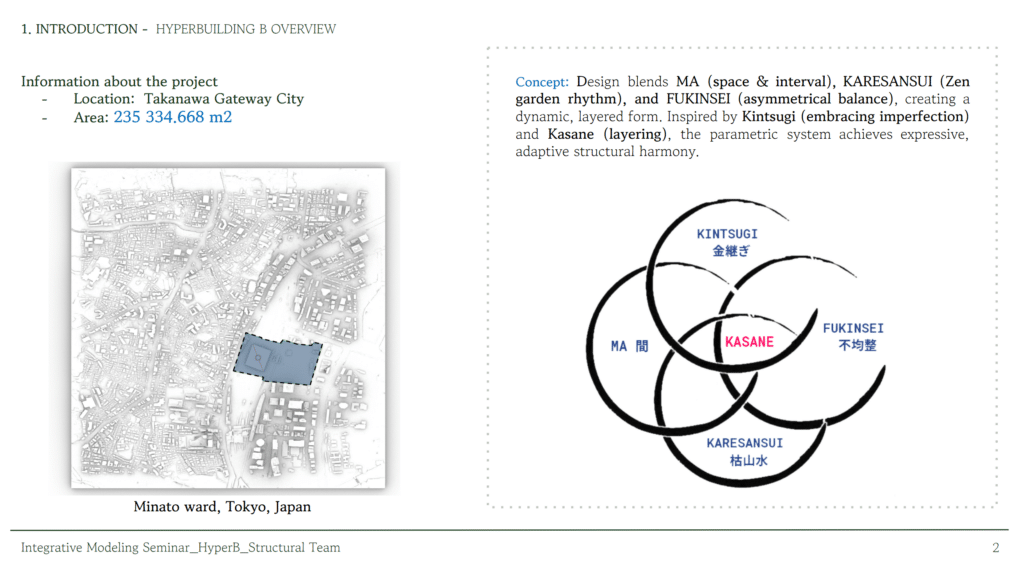
Conceptual Framework: Merging Tradition with Innovation
Inspired by Japanese spatial and design philosophies, the structure of Hyper-Building B embodies:
- MA (間) – Space & Interval: The strategic placement of structural elements creates voids that enhance light, airflow, and spatial harmony.
- KARESANSUI (枯山水) – Zen Garden Flow: The fluid form of the building mirrors the natural rhythm of traditional rock gardens.
- FUKINSEI (不均整) – Asymmetry: A controlled imbalance ensures a dynamic yet stable composition.
- Kintsugi (金継ぎ) – Exposed Joints: Rather than concealing structural seams, they are highlighted as celebrated design features.
- Kasane (重ね) – Layering: A multi-tiered structural system optimizes load distribution and material efficiency.
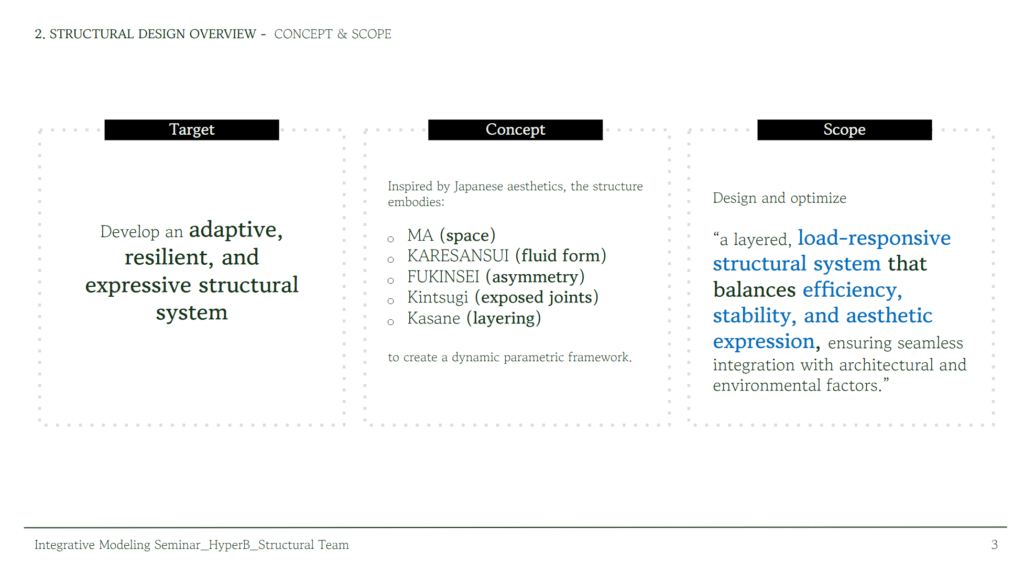
Structural Components & Systems
Hyper-Building B features an integrated structural system comprising key elements such as:
- Diagrid System: A network of diagonal elements enhancing lateral stiffness and load distribution.
- Core Integration: Serving as the backbone of the towers, efficiently transferring vertical and lateral loads.
- Tapered Towers: Reducing wind load deflection while maintaining structural integrity.
- Bridges & Podium: Acting as stabilizing elements that improve structural cohesion and support dynamic load redistribution.
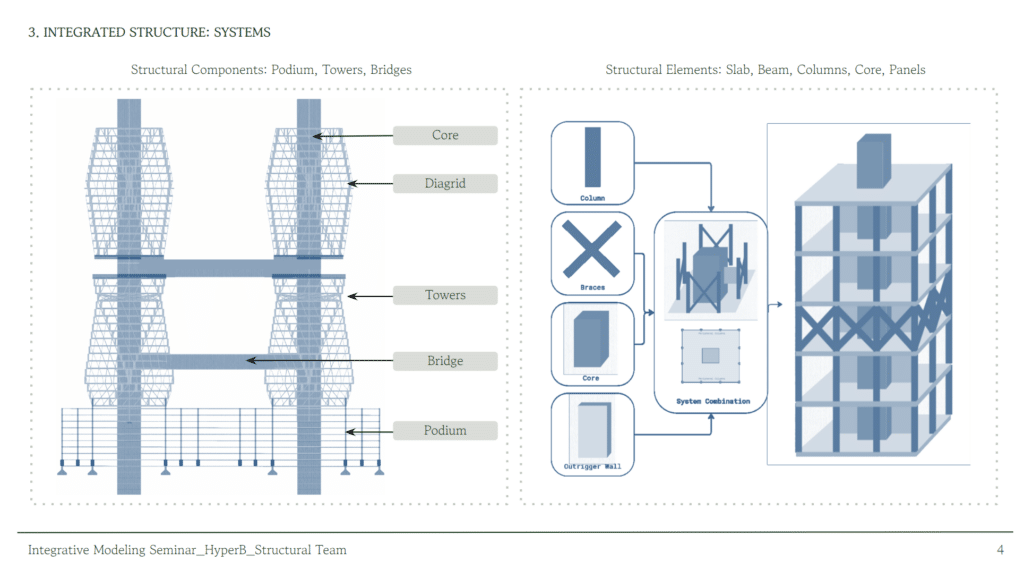
4. Challenge & Approach – Phase 1
This diagram presents the key structural challenges faced in the design process, specifically:
Wind Load Optimization: Adjustments made to improve aerodynamics and minimize structural sway. The step-by-step approach to solving these challenges is also outlined, including the diagrid system, tapered form optimization, dynamic load adaptation, and cross-sectional refinement.
Seismic Stability: Strategies to reduce deflection and improve earthquake resistance.
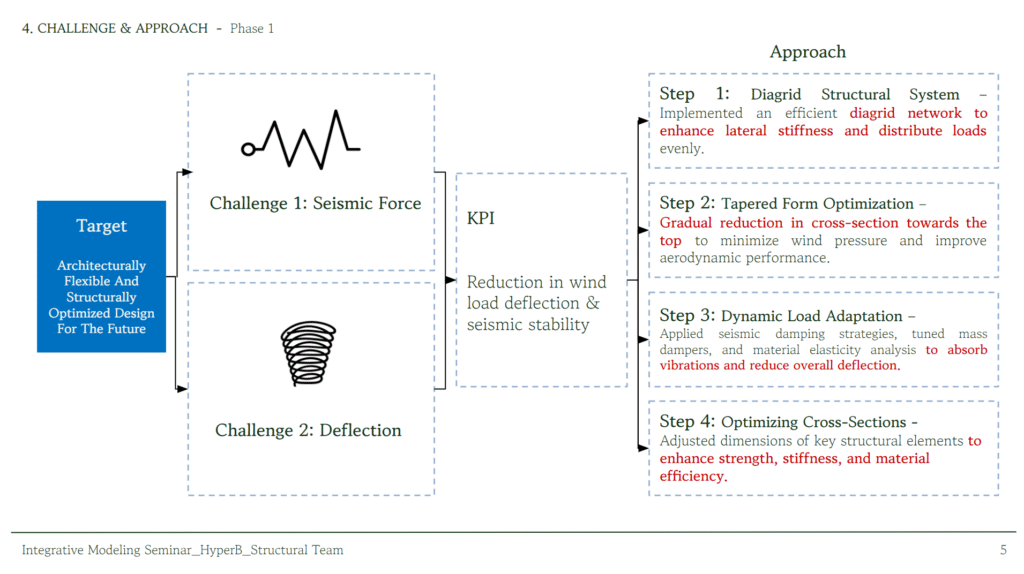
5. Structural Documentation – Axonometric Views
The axonometric diagrams of towers, bridges, and podium provide a three-dimensional representation of how structural elements integrate. This section helps in understanding load distribution, material efficiency, and construction feasibility.
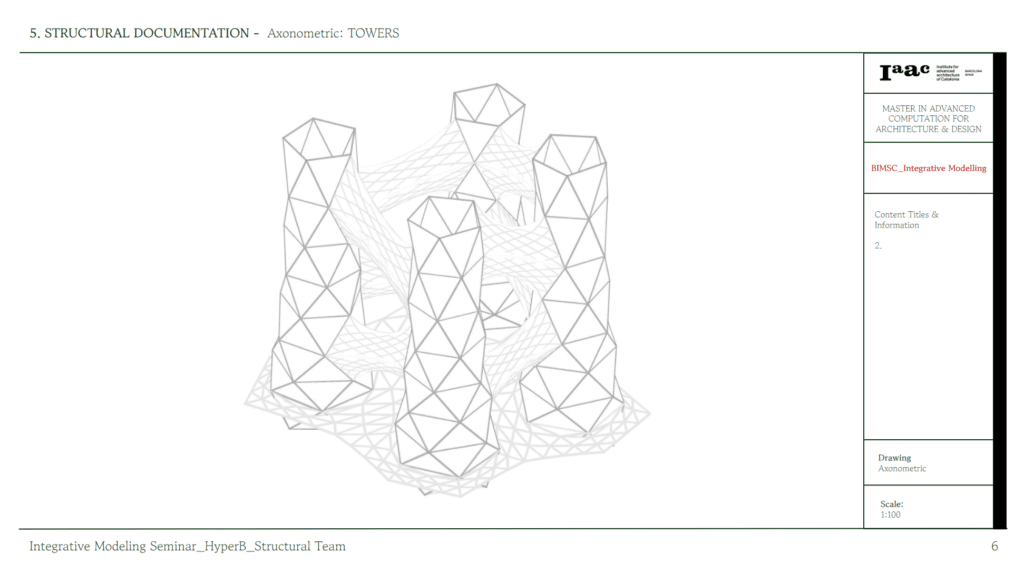
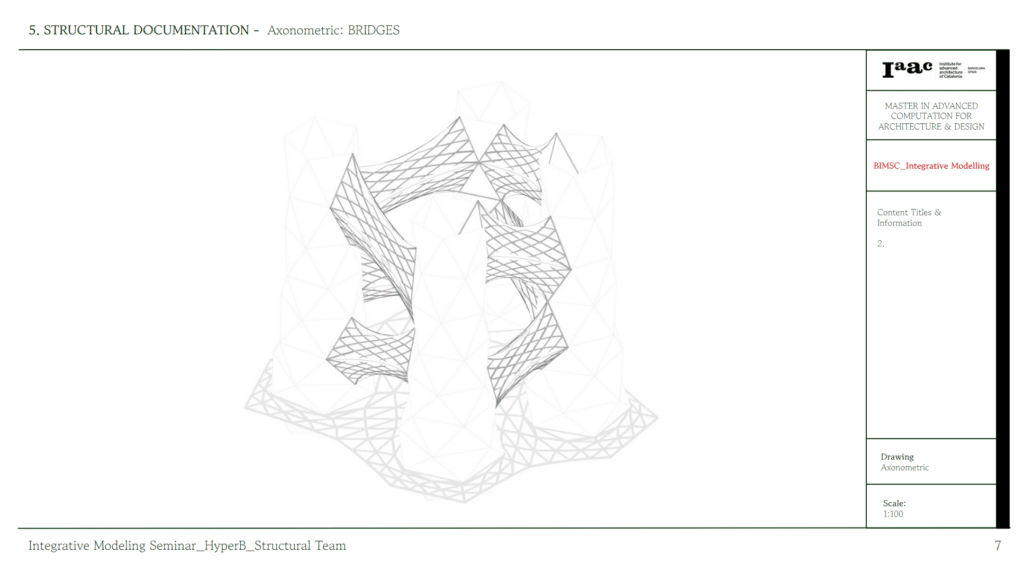
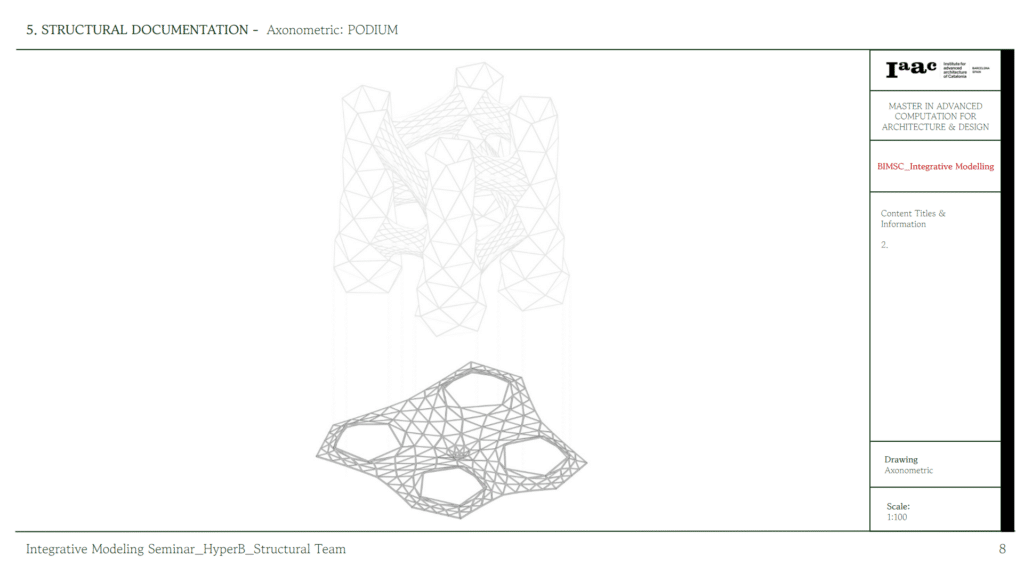
Integrated Structural Design Workflow – Rhino to Rhino.Inside Revit
This slide focuses on the computational workflow used for design optimization, including:
- Rhino for complex geometry generation.
- Grasshopper for parametric adjustments and automation.
- Revit for BIM documentation and coordination.
Structural Documentation – Column & Diagrid Cross-Sections
This diagram illustrates the gradual tapering of columns and refinement of diagrid cross-sections, optimizing:
- Material efficiency.
- Load distribution.
- Seismic performance.
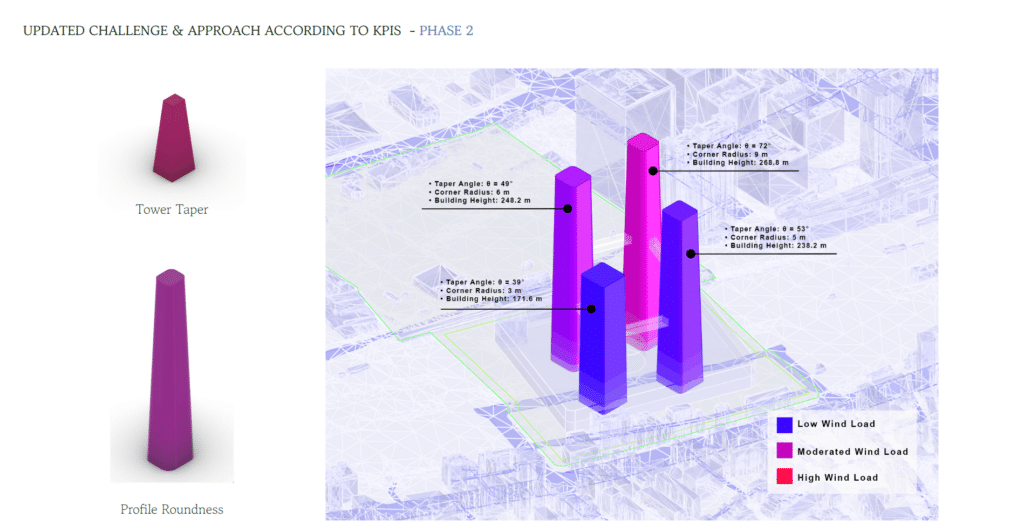
Wind Load Optimization
This section details the modifications made to further improve aerodynamic performance, including:
- Profile Roundness Adjustments – Fine-tuning the shape to reduce vortex shedding.
- Tower Taper Enhancements – Further refining the taper to enhance stability
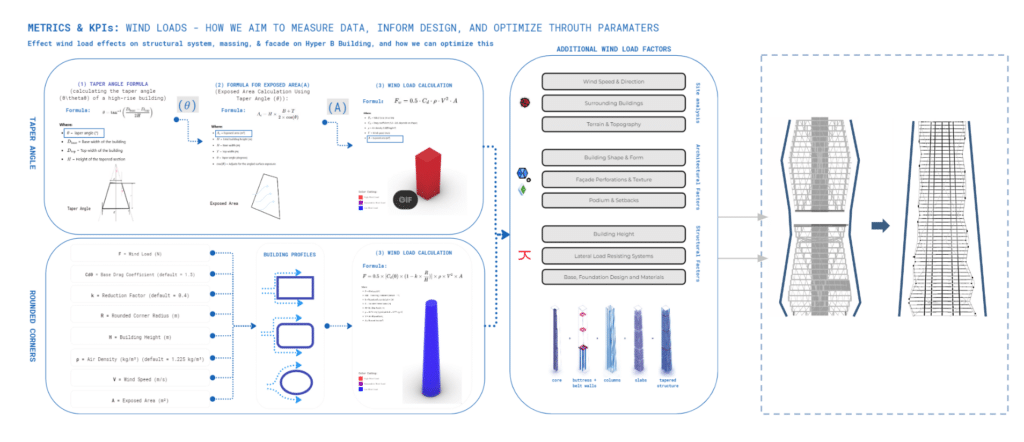
8. Integrated Structural Design Workflow – Rhino to Rhino.Inside Revit
This slide focuses on the computational workflow used for design optimization, including:
- Rhino for complex geometry generation.
- Grasshopper for parametric adjustments and automation.
- Revit for BIM documentation and coordination.
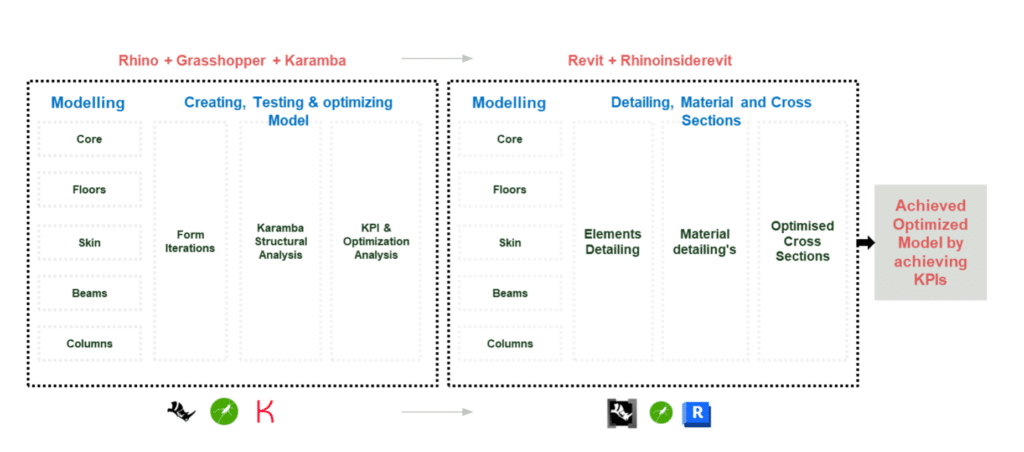
9. Structural Documentation – Column & Diagrid Cross-Sections
This diagram illustrates the gradual tapering of columns and refinement of diagrid cross-sections, optimizing:
- Material efficiency.
- Load distribution.
- Seismic performance.
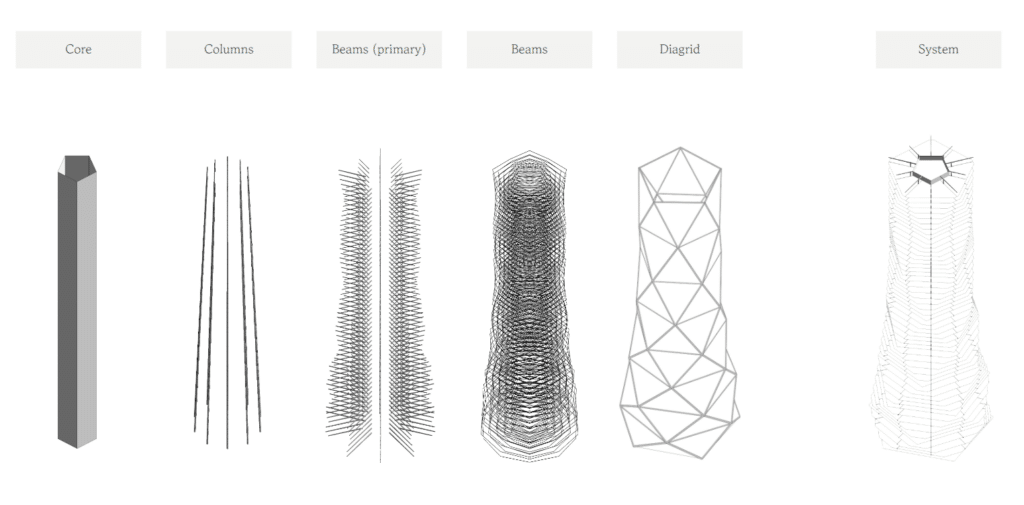
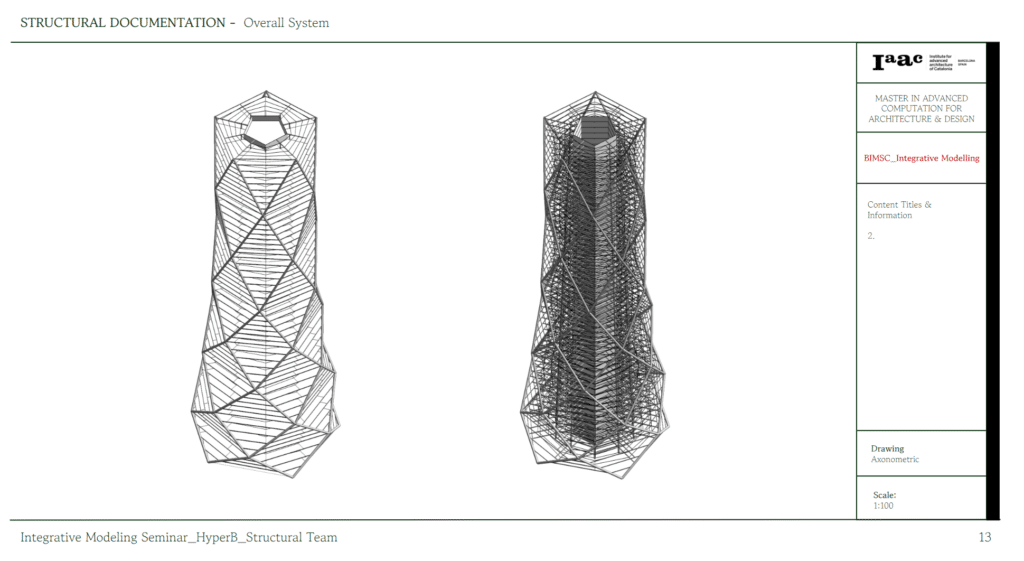
Engineering for Stability: Wind Load & Seismic Optimization
Given its scale, Hyper-Building B required advanced structural adaptations to withstand seismic forces and wind pressures. The structural team implemented:
- Diagrid Structural System: Distributes lateral forces efficiently while minimizing the need for excessive vertical columns.
- Tapered Form Optimization: Reduces wind resistance and improves aerodynamic performance.
- Dynamic Load Adaptation: Incorporates tuned mass dampers, seismic damping strategies, and material elasticity analysis to absorb vibrations.
- Cross-Sectional Optimization: Adjusts dimensions of beams, columns, and panels to enhance strength and material efficiency.
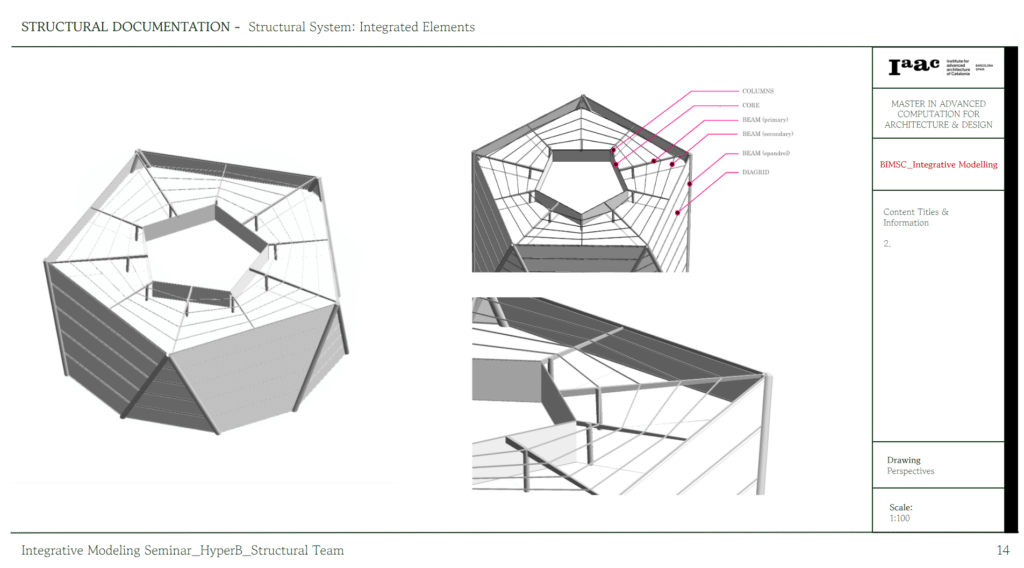
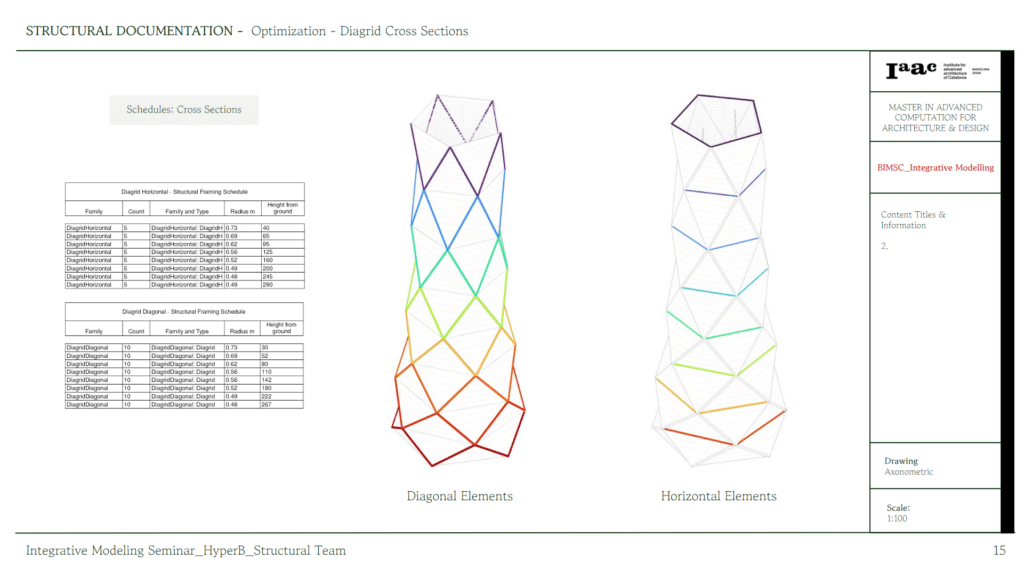
Computational Design & BIM Integration with Rhino.Inside Revit
To facilitate seamless structural modeling and documentation, Rhino.Inside Revit was utilized to bridge computational and BIM workflows. This enabled:
- Parametric Adjustments: Automated refinements in diagrid spacing, column tapering, and structural panelization.
- Real-Time Data Integration: Ensuring accurate load distribution and construction feasibility.
- Streamlined Documentation: Faster iteration cycles and improved coordination across teams.
Final Thoughts: A New Era of Structural Design
The structural innovations behind Hyper-Building B demonstrate how parametric tools, adaptive engineering, and cultural philosophies can merge to create high-performance, aesthetically refined structures. By integrating traditional wisdom with computational advancements, the project pushes the boundaries of future-proof, resilient architecture in urban environments.
With this approach, Hyper-Building B stands as a testament to the power of integrative modeling, setting a benchmark for the next generation of structural and computational design solutions.

